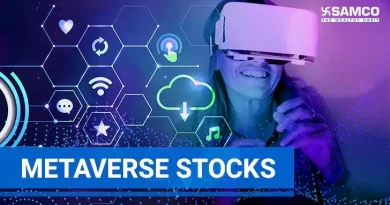The Metaverse in Business: 3 Phases to Better Understanding
The metaverse is a digital world in which virtual experiences mimic real-life ones. Consumers can interact in real-time with each other and the wider digital environment by using avatars. Users live their virtual lives, shopping, working, playing, learning, attending events, or simply hanging out and chatting with one another.
For a long time, the ingredients for a metaversal existence have been in the making. Virtual reality (VR) headsets, for example, have been in development for over a decade and are one of the access points for experiencing the metaverse. For a long time, people have been playing live adventure games with customized characters. When these features were combined with blockchain technology, we arrived at a current product that is hotly debated: the metaverse. But is this what the metaverse is all about? Businesses can understand the status quo and begin strategizing for the future by tracking the stages of development.
Phase 1: Infrastructure Planning
Today, there are several misconceptions about the metaverse. Simply put, the metaverse is the intersection of the physical and digital on a digital plane. In its ideal state, the metaverse, like the internet, can be accessed from anywhere.
Early metaverse apps were primarily concerned with developing games with tokenized incentives (play-to-earn) and were not initially conceived of as contributing to the next phase of the internet. Second Life, widely regarded as the first web2-based metaverse platform, is one of the most prominent examples. Users have an avatar that represents their identity and participate in activities, creating a limited “second” life.
Sandbox, too, was designed as an open-world game. The concept was the same: do things that aren’t strictly required by the game environment. This game had the potential to be something bigger, and when Animoca Brands bought it in 2018, it shifted its focus to web3.
Some characteristics are shared by Phase 1 metaverse apps.
- Closed environments in which users can play, earn, and connect within fortified walls.
- The ability to transact land properties, with most users able to set up shops or gather peers on the properties.
- Purchase NFTs, which can only be purchased within the same metaverse.
- Tokenized remuneration systems, also known as play-to-earn systems.
Phase 2: The Digital Economy Is Introduced
The second phase of metaverse development began as part of the NFT revolution, which exploded when Facebook repositioned itself as a metaverse company. NFTs empowered people to own verifiable and tradable digital property. Brands have begun to experiment with digital real estate ownership, including expanding shopping into game metaverse decentralized applications (dApps), offering branded unique virtual assets, hosting experiences and events, providing special access, and so on.
Phase 2 is all about creating utilities, as opposed to the previous phase. Brands, intellectual property owners, and companies investing in innovation have been working with gaming metaverse dApps to better understand consumer behaviors and economic dynamics. In this stage, no-coding tools and software development kits enable the end user to co-create alongside developers, designers, brands, and retail investors. Interoperability—the import and export of digital assets—remains limited to a single chain, and the user experience is still viewed as 2-D or 3-D gaming.
The bottleneck with Phase 2 platforms is that they were designed for gaming rather than seamless integration with our real lives and economies. I see parallels between this period and the dot-com bubble era. At the time, many marketplaces and social platforms were being developed, such as MySpace, Friendster, SixDegrees, and others. However, they were not thought to be products that solved any real problems.
As a result, they were unable to attract a critical mass and create a network effect. When Facebook launched, those early social media pioneers quickly lost ground in the industry. If we apply the same logic to the metaverse and look at the current number of early adopters, we can conclude that only a few gaming metaverse apps will survive. More than likely, next-generation metaverse platforms will emerge that use web3 infrastructure to solve real-world problems.
Phase 3: Connecting the Physical and Digital Worlds
The third stage of development is the most advanced. It is the point at which the metaverse is seamlessly integrated into all aspects of our lives. Consider a world in which we can move between the physical and the digital while owning the data. Users can interact with brands by co-creating and owning digital assets, and brands can self-onboard into the metaverse across multiple apps, allowing them to contribute to next-generation products. In Phase 3, every location, product, or person becomes a way to access virtual-point-of-experiences in which we all socialize, compose, and own.
To activate Phase 3, we must wait for technological advancement to catch up. 5G, edge computing, sophisticated virtual and augmented tools, and interoperable blockchains are all required. By doing so, we will activate an economy in which digitally owned goods and services outnumber physical goods and services. The metaverse isn’t a video game. It’s a gamified, multi-dimensional experience that we all equally co-create and own. To make progress, we must first understand how the metaverse adds value in each phase so that we can allocate the appropriate amount of time and resources to each. Phase 3 will, in my opinion, be the most critical stage of development. Businesses can make the metaverse as important as the internet by seamlessly integrating physical objects into the digital realm.




